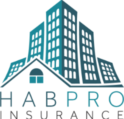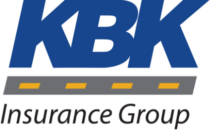The Road to Reopening: How to Turn Uncertainty into a Sound Plan

By Chris Hale, CPS Program Director
The impact of COVID-19 on nonprofit and social services has been nothing short of dramatic. These organizations may currently be planning to resume their operations for the first time, beginning to ramp up new ones or even scaling back in some cases. Regardless of their situation, they will need to take several actions to ensure their activities are as safe and productive as possible, as well as reexamine their insurance needs.
Creating new initiatives and reinventing their workplace can be daunting and confusing for some nonprofit leaders. This is where the expertise and guidance of a quality agent is essential.
For some nonprofits, emerging liabilities and risks due to the COVID-19 pandemic have altered what their definition of “the right nonprofit insurance coverage” really means for them. Whether your client is resuming, revamping or scaling back their operations, it’s best practice to touch base with them — even if it’s a mid-policy year — to ensure the coverage is what they need, based on their current offerings.
Below are a few ways agents can provide value to their clients as they begin to navigate the next stage of this pandemic.
Assessing fleet vehicles
Whether your client removed or added vehicles over the last 18 months, it’s important for them to have an accurate assessment to not only obtain the most up to date commercial fleet insurance, but also ensure compliance, keep costs low and protect their assets. When talking with your clients about the right insurance for their fleet, you should encourage them to think through the most common risks associated with their fleet, leverage any fleet data they have available and consider their surroundings.
Filling in the gaps
A nonprofit that has not had to pivot their operations considerably or even slightly in the last 18 months is hard to come by. If a nonprofit changed the way they operate since the beginning of the pandemic, which many did, their insurance coverage may not align with their current offerings. Agents should proactively connect with their clients to make any necessary modifications, so it reflects their current state of operations properly. For example, many organizations shifted toward providing more virtual or hybrid volunteer opportunities to continue serving their clients. Do these organizations have cyber liability coverage in place? Do they have trainings on how to effectively prevent cyber attacks?
Updating business income
While property insurance covers physical damage to a nonprofit’s premises, business income coverage (BIC) pays for lost revenue caused by the damage and the restoration period. Some common costs and expenses covered under BIC include employee wages and payroll, mortgage or rent payments and others. BIC is not without its differences and nuances, making open conversations with your clients critical to understanding their potential needs. Encouraging them to complete a business income worksheet — like one provided by our Care Providers team — can help clients accurately estimate how much BIC they may need. Coupled with a sound business continuity plan, it serves as a critical planning tool to help nonprofits recover for unplanned business interruptions.
While both COVID-19 and its impact on our communities continue to dominate our attention, it’s essential for nonprofit insurance agents to encourage their clients to take time to complete a full review of past and current operations and make the proper adjustments. As always, Care Providers is here to provide customized solutions and help you design the most optimal insurance policy for your clients.









